NEWS: New budget keeps underfunding education by hundreds of millions
BRIEFS: Filing closes, medical marijuana, and more
CALENDAR: Liquor, contraceptives, school chief and more
TOP FIVE: From Medicaid expansion to the execution of a 14-year-old
COMMENTARY, Brack: How the divisive issue of climate change can be a unifier
SPOTLIGHT: WREN
MY TURN, Green: Benefits of offshore oil and gas for South Carolina
FEEDBACK: Send us your thoughts
MYSTERY PHOTO: Interesting skyscape
S.C. ENCYCLOPEDIA: Baseball in South Carolina
NEWSNEWS: New budget keeps underfunding education by hundreds of millions
By Lindsay Street, Statehouse correspondent | Education advocates in the state are cheerleading the Senate’s draft budget for its focus on K-12 education, but they say work still needs to be done to restore the main stream of funding for public schools in South Carolina.
State law requires per-student funding for public schools to be $2,959 per year in the 2018-19 budget. But proposed funding for the coming year remains hundreds of millions below required levels.
In the current 2017-18 fiscal year, the state spent $2,425 per student to fund public education, an increase of $75 per student over the previous year’s $2,350 base student cost.
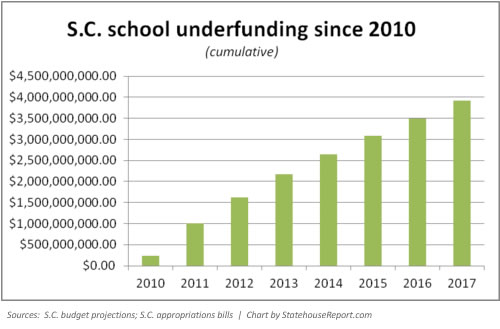 For next year’s budget, Gov. Henry McMaster sought a $10 increase to the base student cost. House budget writers sought to keep it the same from the previous year. Now, the Senate budget writers are drafting a $60 increase to $2,485. The Department of Education requested a $125 per student increase, but even that wouldn’t bring the base-student cost up to the state-required level of $2,959.
For next year’s budget, Gov. Henry McMaster sought a $10 increase to the base student cost. House budget writers sought to keep it the same from the previous year. Now, the Senate budget writers are drafting a $60 increase to $2,485. The Department of Education requested a $125 per student increase, but even that wouldn’t bring the base-student cost up to the state-required level of $2,959.
Bottom line: If the General Assembly adopts the Senate’s increase for next year, funding for public K-12 education would total $1.81 billion. But there would be a funding shortfall of $474 per student. During the 2018-19, Statehouse staffers are projecting there to be 727,513 students in public schools, an increase of about 6,000 students statewide. A simple calculation shows that base-student-cost funding would be $345 million short of what the law requires.
Since 2010, state lawmakers have underfunded public education $4.4 billion, according to Statehouse Report analyses. South Carolina is about 12 percent below its pre-2008 education funding levels, according to a report from the Center on Budget and Policy Priorities.
Praise for the Senate version
During a Senate Finance Committee meeting Wednesday, S.C. Sen. Vincent Sheheen, D-Kershaw, took a moment to praise the Senate’s working version of the budget while disparaging the state’s inability to fully fund K-12 education.

“We really prioritized education and opportunity in this budget,” Sheheen said. Later in an interview with Statehouse Report, Sheheen reiterated that comment. Then, he added: “A caveat which is we don’t have the growth in our government revenue that you’d expect in a good economy to fund your core services.” Sheheen fingered “a billion and a half worth” of tax cuts beginning to eat into state services.
S.C. Department of Education spokesman Ryan Brown said that if the Senate’s per-student cost makes it through committee and the floor in the coming weeks, the department will advocate for the Senate version over the House’s in conference.
Brown said that while it’s “not a huge win, it’s not a loss either.”
“Our goal has been to build the base student cost incrementally,” he said. And while this coming year doesn’t appear to be increased as much as previous years, there is still progress, he said.
S.C. School Boards Association lobbyist Debbie Elmore said the Senate’s version was friendlier toward K-12 education in the state, though imperfect.
South Carolina and its neighbors
South Carolina is middle of the pack when it comes to funding education compared with neighboring Georgia and North Carolina. Education advocates in North Carolina have bemoaned the state’s lack of funding there. Unlike the Carolinas, Georgia lawmakers have pledged fully funding its state-mandated, per-student levels in the coming budget cycle.
“Most (states in the Southeast) are not doing enough to fund public schools,” said Kris Nordstrom, education policy consultant with North Carolina Justice Center. It is reflective of a national trend that was highlighted in a November 2017 report by the Center for Budget and Policy Priorities.
And that could have big impacts on student performance, especially in a state that consistently ranks bottom of the pack for education in study after study.
“We know that there’s a relationship between spending and student outcomes,” Nordstrom said. He cited the recently released report “The Real Shame of the Nation: The Causes and Consequences of Interstate Inequity in Public School Investments.”
The report said South Carolina was among a handful of states with “very low per-pupil spending and low outcomes relative to the national average.”
“The fact that we take that as acceptable is something we need to rethink and it’s something we can rethink through school finance,” Nordstrom said.
‘Main stream of funding’
Per-pupil cost is part of the Education Finance Act (EFA), which was enacted in 1977 to help poorer school districts keep up with wealthier districts in terms of resources. According to Elmore, the state legislature hasn’t fully funded the formula since the 2007-08 budget. It would cost as much as $500 million to full fund the per-student cost to state-mandated levels again, Elmore said.
 “It goes to pay teacher salaries and it pays for all those mandates that come down from Columbia that we are required to do … all those programs and services,” Elmore said. “(As a district), you’re going to have to make sacrifices and cut some things.”
“It goes to pay teacher salaries and it pays for all those mandates that come down from Columbia that we are required to do … all those programs and services,” Elmore said. “(As a district), you’re going to have to make sacrifices and cut some things.”
Brown said per-student funding is one of the main sources of state money for school districts.
“(EFA funding) is the most used that’s not going for a specific program but it’s not the only form of funding the state gives,” Brown said. “It’s not the end all be all, but it certainly remains the main stream of funding.”
When school districts don’t receive enough money from the state, it impacts their ability to pay teachers above the state-mandated minimum — contributing to the teacher shortage and bigger classrooms, Elmore said.
“The core problem is not the formula. The core problem is we need to fund across the state to keep classroom sizes small,” Sheheen said.
More on the Senate’s proposed budget
Sheheen touted other positives to the Finance Committee’s draft budget: increasing the base teacher pay by $2,000, increasing annual pay raises and offering a 1 percent pay increase.
“That was very meaningful and especially something to be proud of given the constrained budget that we have,” he said.
The budget also calls for replacing 100 of the state’s fire-prone, aging school buses.
“A lot of stuff is still up in the air but it’s a positive to see Senate Finance take a lot of our asks and the asks of the education community and make some steps in the right direction,” Brown said.
- Have a comment? Send to: feedback@statehousereport.com.
BRIEFS: Filing closes, medical marijuana, and more
![]() By Lindsay Street, Statehouse correspondent | State Democrats are fielding statewide candidates in five of nine constitutional seats as of filing Friday morning. Filing closes at noon.
By Lindsay Street, Statehouse correspondent | State Democrats are fielding statewide candidates in five of nine constitutional seats as of filing Friday morning. Filing closes at noon.
But the congressional seat being vacated by U.S. Rep. Trey Gowdy is drawing the largest number of candidates, most of whom are Republican. A dozen Republicans and five Democrats so far have declared as candidates for Gowdy’s Greenville-Spartanburg area seat.
[UPDATED, 1 p.m., March 30] Here is a listing of candidates by party as of Candidates marked with an asterisk (*) are incumbents.
Attorney General
- Republican Party: Alan Wilson*, Todd Atwater, William D. Herlong
- Democratic Party: Constance Anastopoulo
Commissioner of Agriculture
- Republican: Hugh Weathers*
- Green, David Edmond
- United Citizens: Chris Nelums
Comptroller General
- Republican: Richard Eckstrom*
 Governor
Governor
- Republican: Henry McMaster*, John Yancey McGill, Kevin Bryant, Catherine Templeton, John Warren
- Democratic: James Smith, Marguerite Willis, Phil Noble
- American: Martin Barry
Secretary of State
- Republican: Kerry Wood, Joshua Putnam, Mark Hammond*, Nelson Faerber
- Democratic: Melvin T. Whittenburg
State Superintendent of Education
- Republican: Molly Mitchell Spearman*
- Democratic: Israel Romero
State Treasurer
- Republican: Curtis Loftis*
- American: Sarah Work
- Democratic: Rosalyn L. Glenn
U.S. House of Representatives, District 1
- Democratic: Toby Smith, Joe Cunningham
Dmitri Cherny - Republican: Katie Arrington, Dmitri Cherny, Mark Sanford*
U.S. House of Representatives, District 2
- American: Sonny Narang
- Republican: Joe Wilson*
- Democratic: Phil Black, Sean Carrigan, Annabel Robertson
U.S. House of Representatives, District 3
- Republican: Jeff Duncan*
- Democratic: Hosea Cleveland, Mary Geren
- American: Dave Moore
U.S. House of Representatives, District 4
- American: Guy V. Furay
- Republican: James Epley, John Marshall Mosser, Dan Hamilton, Dan Albert, Josh Kimbrell, Barry Bell, Lee Bright, Claude Schmid, Justin David Sanders, William Timmons, Shannon Pierce, Stephen H. Brown
- Democratic: J.T. Davis, Eric Graben, Will Morin, Doris Lee Turner, Brandon P. Brown
U.S. House of Representatives, District 5
- Constitution: Michael Chandler
- Democratic: Sidney Moore, Steve Lough, Mark Ali, Archie Parnell
- Republican: Ralph W. Norman*
U.S. House of Representatives, District 6
- Republican: Gerhard R. Gressmann
- Democratic: James E. “Jim” Clyburn*
- Green: Bryan Pugh
U.S. House of Representatives, District 7
- Democratic: Bruce Fischer, Bill Hopkins, Mal Hyman, Robert Williams
- Republican: Larry Guy Hammond, Tom Rice*
- Libertarian: Dick Withington
Other news
Here are other things that happened this week (Keep in mind the S.C. House was on furlough):
Medical marijuana. Despite protests from State Law Enforcement Division Chief Mark Keel about how he thought legalizing medical marijuana is the slippery slope to legalized recreational pot use, a Senate committee has given a positive vote and sent medical marijuana to the Senate floor. However, the bill’s key sponsor, S.C. Sen. Tom Davis, R-Beaufort, says the contentious bill is unlikely to pass the Senate prior to the April 10 crossover deadline. More on crossover here.
Senate delays rate-break vote. In the flurry to pass bills before a break next week, members of the Senate decided to delay a vote on whether S.C. utility customers should continue paying surcharges that fund a canceled $9 billion nuclear project at V.C. Summer. The delayed action comes after a study commissioned by the Senate showed South Carolina Electric & Gas could withstand a 13 percent rate cut.
Felons not banned from owning guns. A Senate panel has killed a proposal that would ban felons from owning guns. Read more here.
S.C. joins ‘sanctuary cities’ lawsuit. S.C. Attorney General Alan Wilson has joined 17 of his peers in a federal lawsuit by President Donald Trump against California and so-called sanctuary cities for laws designed to obstruct the federal government’s ability to enforce immigration laws. Wilson said states can’t be allowed “to ignore federal laws they don’t like.”
Pipelines are different from telephones. The Senate passed a bill that exempts certain rights and powers of telephone utilities from pipeline companies. The bill heads to the House.
CALENDARCALENDAR: Liquor, contraceptives, school chief and more
![]() The House returns to session April 3. The Senate is on break until April 9, when it should start wrapping up state’s 2018-19 budget. Here are a few items coming up you should know about:
The House returns to session April 3. The Senate is on break until April 9, when it should start wrapping up state’s 2018-19 budget. Here are a few items coming up you should know about:
Liquor licenses. The Senate made amendments on a bill that regulates how many liquor stores a retailer can operate in the state, and it’s up to the House to approve those amendments. If approved, the bill will be sent to the Governor’s desk.
Contraceptives. After the House initially approved H. 3064, which would allow pharmacists to dispense hormonal contraceptives without a prescription, the House reconsidered. Now, it’s back on the calendar for a third and final vote.
Schools chief. The House will mull second reading of a Senate bill that would make the state Superintendent of Education to be an appointed position, instead of an elected position.
Nuclear. House members have two bills on the floor regarding the V.C. Summer nuclear expansion project that saddled ratepayers with $9 billion in debt before it was canceled last year. H. 4380 will order the Public Service Commission to issue refunds to South Carolina Electric & Gas customers, and H. 4376 would restructure the Public Service Commission.
Anti-bullying. Up for second reading on the floor next week is House bill, which seeks to penalize school bullying. Known as the “B.P. Act,” H. 4701 seeks to provide anti-bullying policies in public schools and offering remediation to allegations of bullying with an appeals procedure.
Clean property. The House will consider second reading of H. 3896, which authorizes counties to adopt an ordinance that requires property owners to keep their yards neat.
— Lindsay Street, Statehouse correspondent
TOP FIVETOP FIVE: From Medicaid expansion to the execution of a 14-year-old
By Lindsay Street, Statehouse correspondent | Our weekly Top Five feature offers big stories or views from the past week or so with policy and legislative implications that you need to read because of how they could impact South Carolina.
![]() This week, you’ll find stories and data about the 1944 execution of George Stinney Jr., the influence of guns in South Carolina, veteran unemployment numbers, the flu still sticking around, and how states that expanded Medicaid under Obamacare didn’t incur more costs. If you have stories to suggest to our readers, send to: feedback@statehousereport.com.
This week, you’ll find stories and data about the 1944 execution of George Stinney Jr., the influence of guns in South Carolina, veteran unemployment numbers, the flu still sticking around, and how states that expanded Medicaid under Obamacare didn’t incur more costs. If you have stories to suggest to our readers, send to: feedback@statehousereport.com.
- The gun industry is powerful in South Carolina, Cheat Sheet, March 28, 2018.
South Carolina made a top 15 list for states where the gun industry is most powerful. The list was based on a WalletHub report earlier this month. An excerpt:
“If you’re talking about gun prevalence, few states top South Carolina. Palmetto State residents rank among the elite in gun ownership, annual sales, Google searches, and ads for buying or selling weapons. South Carolina also ranks 21st in gun industry jobs.”
- Veteran unemployment down in South Carolina, Columbia Business Report, March 28, 2018.
The state’s workforce agency offers veterans a slew of services, which the agency says is paying off with a nearly 4 percent decline in veteran joblessness last year. An excerpt:
“South Carolina’s unemployment rates for veterans declined to 3.9 percent in 2017. The rate was at 5 percent at the end of 2016. The 2017 report showed 182,000 veterans employed and 7,000 unemployed. Of the 417,000 veterans living in the state, 189,000, or 45.4 percent, participated in the labor market. Nationally, the veteran unemployment rate fell from 4.3 percent to 3.7 percent in 2017.”
- States that expanded Medicaid don’t incur extra costs, Brookings Institute, March 26, 2018.
South Carolina is one of 18 states that chose not to expand Medicaid under the Affordable Care Act. One of the arguments at the time was that states feared it could create an additional cost. Now, there’s evidence that states that chose to expand the program have not experienced undue financial burdens. An excerpt:
“(T)he leading peer-reviewed, academic study on this question documented, based on comprehensive data from the National Association of State Budget Officers that, by 2015, ‘there were no significant increases in spending from state funds as a result of the expansion.’ Although states will start to incur some costs in years following 2015 as their 10 percent funding requirement is phased in, several expert analysts predict that those costs are likely to remain modest, despite increased enrollment.”
- Flu still packing a punch, The Manning Times, March 29, 2018.
Despite flu season winding down, the threat of contracting the flu virus remains, according to the Centers for Disease Control. The agency says there is a second wave of Flu Virus B happening now. An excerpt:
“The CDC says that B-viruses are being reported more frequently than the A-strain, which had been more dominant recently. A CDC spokesperson says B-strain viruses tend to be more severe for younger children.”
- A dark chapter in S.C. history explored, The Post and Courier, March 25, 2018.
The Post and Courier this week featured a five-part series on the 1944 execution of 14-year-old George Stinney Jr. of Clarendon County. If you haven’t had a chance to read it, here is an excerpt:
“George was poor and black. A depraved child-killer to his executioners. A savage rapist to the governor. An unrepentant predator in the press. Until new evidence revealed he probably wasn’t. Three dead children, one undying mystery.”
- Have a comment? Send to: feedback@statehousereport.com.
BRACK: How the divisive issue of climate change can be a unifier
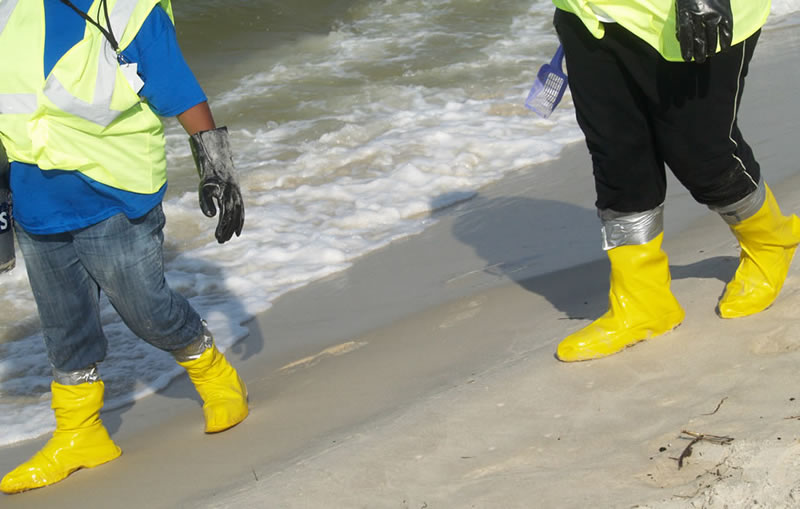
By Andy Brack, editor and publisher | South Carolinians can learn something from an Alabama Christian leader who is trying to unite people through what may seem an unlikely issue – the environment.
 Dr. Randy Brinson, a Montgomery gastroenterologist who is president of the Christian Coalition of Alabama, is on a mission. He wants to make climate change become a nonpartisan issue that brings people together for solutions, not allow it to continue to be a political ping pong ball manipulated by cynics for their own purposes.
Dr. Randy Brinson, a Montgomery gastroenterologist who is president of the Christian Coalition of Alabama, is on a mission. He wants to make climate change become a nonpartisan issue that brings people together for solutions, not allow it to continue to be a political ping pong ball manipulated by cynics for their own purposes.
“It is not a partisan issue until people make it a partisan issue,” he said this week. “It can’t be controlled by political donations or politicians alone. It has to involve all of us working together to reduce or mitigate factors that we can control.”
Next weekend on the Alabama coast, Brinson is hosting the first Embrace and Restore Conference. It will be a day-long discussion to help evangelical leaders better understand the reality of changes to climate brought on by man’s interactions with the environment. Among those scheduled to speak are Alabama’s commissioner of agriculture and former U.S. Rep. Bob Inglis, a South Carolina Republican who heads the Energy and Enterprise Initiative to promote free enterprise action on climate change.
“We are hosting the conference to highlight what aspects of climate change that we can be impactful and proactive in addressing as the body of Christ,” Brinson said. “We also are addressing the Deepwater Horizon disaster and how to keep that from occurring again along with hurricane mitigation and homeowners’ insurance concerns.”
In April 2010, oil spewed for weeks from the Deepwater Horizon well in the Gulf of Mexico and polluted the coast from Texas to Florida. Eight years later, memories of the kerosene scent around Mobile Bay remain as fresh as this spring’s budding flowers.

“The issue of climate change has been so politicized by the political left and right,” Brinson observed. “The uniting theme for evangelical Christians is the impact climate is having on those areas that are being served by missionaries, particularly in sub-Sahara Africa. There is no denying the impact of climate change on the continent causing disease and water shortage and death. We cannot help this region recover without addressing climate change.”
In other words, Brinson sees the connection – a nexus missed by many who ignore or don’t believe in climate change – of man’s impact on the environment in destitute places where American missionaries help. For them to be able to do their work, he says, they need to reduce man’s impacts on climate.
This approach is not unfamiliar territory for Brinson, who gained acclaim in the 2004 election for registering more than 78,000 evangelicals through Redeem the Vote, an evangelical education initiative similar to Rock the Vote for youths.
Listen to how Brinson described man’s interaction with the environment in a 2006 interview:
“We are entrusted to protect it. This in no way implies that we worship the Earth and see it as some kind of pagan deity, as some conservatives would attempt to stereotype those interested in the environment. It is truly our sacred duty to protect the Earth as we utilize the resources that God has provided to us.
“These ideas are not mutually exclusive. Most sportsmen today are professing Christians, yet they support initiatives that protect our natural forests, lakes, streams and waterways so that future generations can enjoy them. We must mitigate the man-made emissions that threaten our environment. Just as we are commanded to treat our bodies as the temple of the Holy Spirit, we must care for the environment and the world around us.”
Brinson’s strategy is different from how many environmentalists use logic and science to push leaders for climate change solutions. But what’s notable is how he offers a way to get to the same place for pragmatic solutions through the parallel path of using Biblical teachings of leaving the earth a better place by reducing environmental impacts and global warming.
This is an important lesson. It uses what many see as a divisive issue in a unifying manner. It’s also something the conservation community in South Carolina should embrace – to join with people who may not approach issues like they do but who want to get to a common goal.
- Learn more about the conference here: https://www.embraceandrestore.org/
- Have a comment? Send to: feedback@statehousereport.com.
SPOTLIGHT: WREN
 The Women’s Rights and Empowerment Network (WREN) is a South Carolina-based nonpartisan network created to build a movement to advance the health, economic well-being, and rights of South Carolina’s women, girls, and their families. WREN provides a strong, collective voice for South Carolina’s women and girls.
The Women’s Rights and Empowerment Network (WREN) is a South Carolina-based nonpartisan network created to build a movement to advance the health, economic well-being, and rights of South Carolina’s women, girls, and their families. WREN provides a strong, collective voice for South Carolina’s women and girls.
With its partners and members:
- WREN advocates at the Statehouse for policies and laws that will improve the status of women.
- WREN educates the public on issues that affect women and girls and seeks to inspire action.
- WREN empowers people and strengthens organizations to support women and young people.
- WREN builds coalitions of people and organizations committed to improving opportunities in South Carolina.
WREN convenes diverse voices, collects and disseminates research, and shares information about practical solutions to promote gender equality and improve our state’s health and economic vitality.
- To learn more, visit WREN online at: http://www.scwren.org
GREEN: Benefits of offshore oil and gas for South Carolina

By Mark Green, special to Statehouse Report | Safely tapping America’s offshore natural gas and oil reserves could provide billions of dollars for the economies of coastal states – a big reason why the needs and voices across entire states, not just their coastal areas, must be considered in the offshore energy conversation.

For example, federal revenue sharing could help transform state economies by sending billions in royalties, rentals and fees to state coffers. By putting revenue-sharing programs in place – like those already working for the states of Alabama, Louisiana, Mississippi and Texas – North and South Carolina, Virginia, Georgia and other states could benefit from offshore energy development. And that’s in addition to industry spending and jobs created that would help boost those state economies.
“Natural gas and oil exploration in the Atlantic could be an opportunity for our state to see much-needed additional economic improvements, investment, and job creation,” South Carolina state Sen. Stephen Goldfinch told a U.S. House hearing last fall. “[I]t is imperative that you remember places like Andrews and Conway, and Georgetown, South Carolina, where the ‘golden egg’ of tourism hasn’t helped eradicate poverty. For those who live in Andrews and Conway and Georgetown, oil and gas would be their ‘golden egg,’ bringing non-seasonal, high-paying jobs … and hope for a prosperous economic future for the generations to come.”
Here’s what that “golden egg” could look like for a sampling of the states, according to economic projections in four regional studies for the outer continental shelf (OCS), recently released by American Petroleum Institute:
North Carolina
- $4.4 billion in federal revenue sharing over a 20-year forecast period, reaching $495 million per year at the end of the study period.
- $36.1 billion in industry spending over the forecast, reaching $3.5 billion per year by the end of the forecast.
- $41.8 billion added to state GDP over the forecast.
- 55,760 jobs gained by the end of the forecast.
South Carolina
- $3.8 billion in federal revenue sharing over the forecast, reaching $445 million per year at the end of the forecast.
- $20.8 billion in industry spending over the forecast, reaching nearly $2.1 billion per year by the end of the forecast.
- $24.1 billion added to state GDP over the forecast.
- 33,604 jobs gained by the end of the forecast.
Georgia
- $544 million in federal revenue sharing over a 20-year forecast period, reaching $58 million per year at the end of the study period.
- $2.7 billion in industry spending over the forecast, reaching $272 million per year by the end of the forecast.
- $3.6 billion added to state GDP over the forecast.
- 4,218 jobs gained by the end of the forecast.
Numbers likes these illustrate big economic opportunity for the states above and others whose offshore areas could be included in a new federal offshore leasing plan now under development. Again, economic benefits of this size compel policymakers to consider the needs of entire states when discussing offshore development.
On average, jobs in the oil and gas industry pay $101,000 in annual salaries. At last fall’s House hearing, former U.S. Sen. Mary Landrieu of Louisiana said natural gas and oil industry employment long has benefited her state. “We have men and women graduating from high school that are going to work in the oilfield and they don’t make minimum wage,” Landrieu said.
Offshore energy is compatible with other ocean uses, including the military. It is safer than it has ever been and is always improving, thanks to technology, industry standards, safety management systems and employee training. No human enterprise is without risk, but industry’s premium on technology and safety – to protect its workers and the environment – properly manages this risk while producing energy and national security benefits for today and decades into the future.
“The Interior’s offshore proposal is the first step in advancing South Carolina’s economic potential and energy security. Offshore energy exploration and development can lead to significant economic growth, the creation of high-paying jobs, and millions of dollars flowing into state coffers to fix our schools, our infrastructure, and build a brighter future for communities all across South Carolina,” said Mark Harmon of the South Carolina Petroleum Council.
This is American energy that should be safely harnessed to benefit all Americans – in coastal states and across the entire country.
Mark Green is editor in Washington, D.C., of Energy Tomorrow, a publication of the American Petroleum Institute.
- Have a comment? Send it to: feedback@statehousereport.com.
FEEDBACK: Send us your thoughts
![]() We love hearing from our readers and encourage you to share your opinions. But you’ve got to provide us with contact information so we can verify your letters. Letters to the editor are published weekly. We reserve the right to edit for length and clarity.
We love hearing from our readers and encourage you to share your opinions. But you’ve got to provide us with contact information so we can verify your letters. Letters to the editor are published weekly. We reserve the right to edit for length and clarity.
We generally publish all comments about South Carolina politics or policy issues, unless they are libelous or unnecessarily inflammatory. One submission is allowed per month. Submission of a comment grants permission to us to reprint.
Comments are limited to 250 words or less. Please include your name and contact information.
- Send your letters to: feedback@statehousereport.com
MYSTERY PHOTO: Interesting skyscape
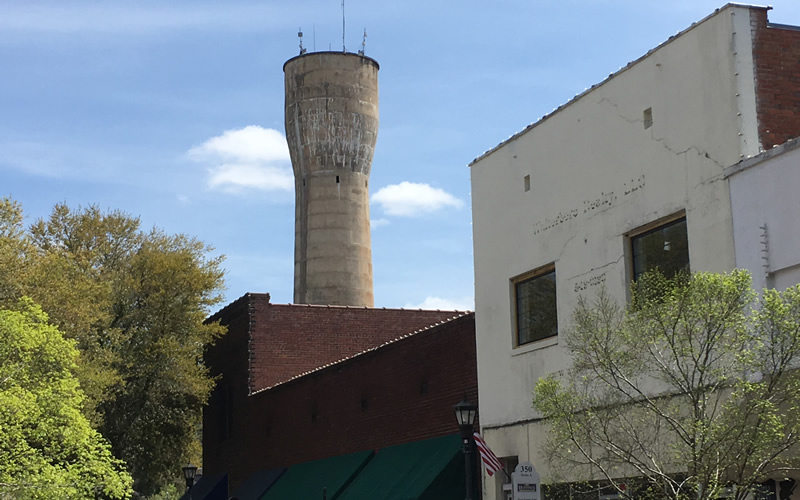
Here’s a photo of a skyscape somewhere in South Carolina. Just what is it and where is it? Send your best guess – plus your name and hometown – to feedback@statehousereport.com. In the subject line, write: “Mystery Photo guess.”
Our previous Mystery Photo
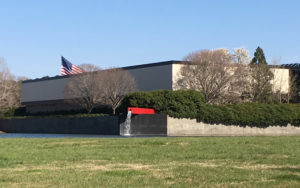 The March 23 Mystery Photo showed a red fountain dumping water in a pond outside a corporate headquarters. As several alert readers noted, it’s at the Milliken corporate campus in Spartanburg.
The March 23 Mystery Photo showed a red fountain dumping water in a pond outside a corporate headquarters. As several alert readers noted, it’s at the Milliken corporate campus in Spartanburg.
Congratulations to those who correctly identified the photo: Faith A. Line of Anderson; C.D. Rhodes of Columbia; W. Taft Matney Jr. of Mauldin; Larry Cannon of Simpsonville; Craig Jacobs and Gil Bullman, both of Spartanburg; Lexie Chatham and Sonja Turner, both of West Columbia; George Graf of Palmyra, Va.; Bob Stillwagon of Boiling Springs; and Dan Jepson of Travelers Rest.
Graf found the photo a little vexing, compared to South Carolinians who are familiar with it because they live near it. He added, “According to sctrails.net, This campus sits on 600 acres of beautifully manicured greenspace – one of the largest corporate greenspaces in the Southeast and a nationally recognized arboretum – that was once a peach orchard.”
Send us a mystery: If you have a photo that you believe will stump readers, send it along (but make sure to tell us what it is because it may stump us too!) Send to: feedback@statehousereport.com and mark it as a photo submission. Thanks.
S.C. ENCYCLOPEDIAHISTORY: Baseball in South Carolina
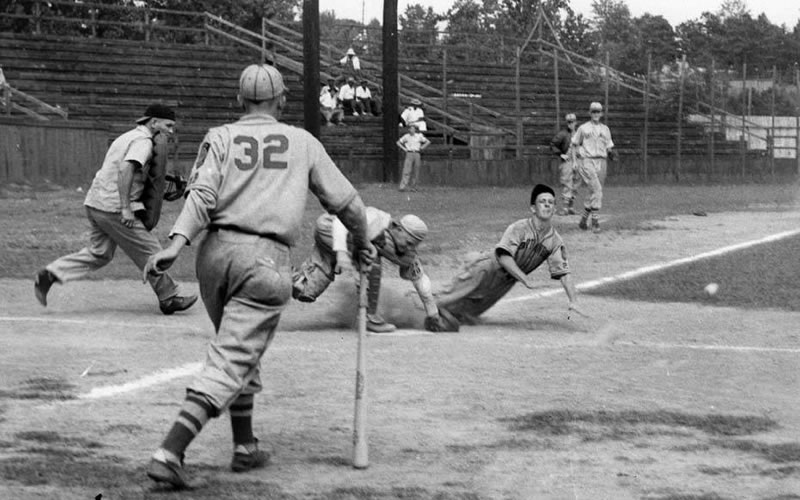
S.C. Encyclopedia | Union troops introduced baseball to South Carolina during the late stages of the Civil War. The game soon blossomed into a major social and athletic event in many rural and urban communities during Reconstruction. Both Columbia and Charleston formed local teams that played against the northern occupation forces.
By the time Wade Hampton III became governor in 1877, the game was firmly established. In a game played the following year in Charleston between the “Carolinas” and the “Palmettoes,” attendance was so large that fans disrupted play by crowding onto the field. Spectators’ interest also included wagers on their favorite side. By 1886 professionalism had come to South Carolina’s game. Charleston’s Southern Association team reportedly paid its players as much as $2,000. Its biggest rivals in these early years were Georgia teams. Some Charleston fans even paid 15¢ to follow away games telegraphed, play-by-play, into Hibernian Hall. Amateur and semi-professional baseball had equally large followings. By 1889 Camden was the site of a “flourishing Base Ball Association owning a park where the best amateur games of the State are played.”
Two years earlier, a lively game in Greenwood between the “Columbias” and the “Greenvilles” was so competitive that a riot nearly ensued after the Greenville team won, 7 to 6. By the end of the nineteenth century, some of the state’s most loyal baseball fans were found in South Carolina’s mill villages. In the 1870s and 1880s, when the textile industry began taking root in the upstate, mill-sponsored baseball clubs emerged, and they were thriving by the start of the twentieth century. Initially, mill teams consisted of the best players in each local workforce. But as the rivalries between mill towns grew, owners sought better talent and recruited talented players from outside the community, sometimes snatching the best players from rival mills. Mill baseball provided textile communities with both entertainment and a source of pride. One of the earliest mill champions was the Piedmont team led by Champ Osteen. In 1899, after beating most of the local opposition, the Piedmont squad received a challenge from a team from Augusta, Georgia, which they also defeated. Until the twentieth century, mill leagues were informal and focused on local tournaments and other games throughout the summer months.
Some of the first organized mill leagues appeared in 1908 with the formation of the South Carolina Mill League and the Greenville Mill League. During the next half-century, regional mill leagues developed throughout the upstate and the Midlands, including teams from Anderson to Gaffney and Graniteville to Winnsboro. Hundreds and sometimes thousands of fans attended local games. Hotly contested matches sometimes led to fights both on and off the field. Perhaps the greatest triumph for any mill town came in 1936, when the Spartanburg American Legion team won the state’s first national championship in any sport by defeating a Los Angeles team in a five-game series (some twenty thousand fans attended the fifth and deciding game). Mill leagues continued to thrive into the post–World War II era. But by the early 1950s, automobiles and televisions undermined mill league baseball’s following. Attendance dwindled, and by the early 1960s the textile leagues had virtually ceased to exist.
Baseball continued to thrive in other leagues. In August 1875 one of the first recorded intercollegiate games in the state saw an all-black team from the University of South Carolina defeat an all-black team from an Orangeburg college by a score of 41 to 10. By the late nineteenth century the University of South Carolina and Clemson began their long baseball rivalry. Other schools also organized varsity squads around the same time, including Benedict, South Carolina State College, the Citadel, Furman, and Wofford. Competition centered on in-state schools and neighboring ones in North Carolina and Georgia. In 1958 Clemson became the first South Carolina school to reach the College World Series. Since then, competition for honors and star players accelerated at all levels of college baseball as each of the state’s schools competed to reach the College World Series. Several college stars have advanced to play professionally.
The minor league system that fed players into the major leagues has given excitement and pleasure to South Carolina fans since the 1900s. One of the most endearing of these has been the South Atlantic League, which began play in 1904. Initially consisting of teams from South Carolina, Georgia, and Florida, franchises have come and gone from Columbia, Charleston, and Greenville during a century of play. Other minor leagues that flourished at one time or another in the state include the Carolina League (Greenville, Spartanburg, and Greenwood) and the Palmetto League, ca. 1934–1951 (Orangeburg, Hartsville, Lake City, Kingstree, Georgetown, Camden, and Sumter).
Until the 1950s these minor and amateur leagues were segregated, allowing only white ball players. Black amateur leagues flourished in many areas of the state, but little documentation of their history remains. The earliest documented black textile league game occurred on September 4, 1895, in Newberry County between Newberry Mills and their counterparts from Anderson. Black textile teams disappeared for the same reasons that their white counterparts did during the 1950s. While Jackie Robinson integrated the major leagues in 1947 and South Carolina native Larry Doby followed three months later as the first African American in the American League, the desegregation of baseball in South Carolina took longer. In 1955 one of the first African Americans to play professionally in the state was Frank Robinson, who starred with the Columbia Reds and later had a Hall of Fame career in the major leagues with the Cincinnati Reds and the Baltimore Orioles.
Youth baseball took the longest to integrate. When the black Cannon Street YMCA team from Charleston fielded an all-star team to compete in the 1955 Little League, white teams in the state refused to play against them. Other teams from the Southeast followed South Carolina’s lead, ignoring instructions from Little League headquarters in Williamsport, Pennsylvania, directing that they play. Although the Cannon Street team was declared the winner by default, they could only watch the Little League World Series after being declared ineligible because they had not earned the right on the playing field.
Having refused to accept Little League directives to allow black teams, white officials from South Carolina and other southern states formed an independent organization called Little Boys Baseball, Inc. In 1956 a Greenville entry won the league’s first World Series. The fledgling league changed its name to Dixie Youth Baseball in 1962 after Little League officials protested that Little Boys Baseball infringed on their trademark. By the middle of the decade Dixie Youth Baseball finally desegregated.
— Excerpted from an entry by Fritz Hamer. To read more about this or 2,000 other entries about South Carolina, check out The South Carolina Encyclopedia, published in 2006 by USC Press. (Information used by permission.)
ABOUT STATEHOUSE REPORT
Statehouse Report, founded in 2001 as a weekly legislative forecast that informs readers about what is going to happen in South Carolina politics and policy, is provided to you at no charge every Friday.
- Editor and publisher: Andy Brack, 843.670.3996
- Statehouse correspondent: Lindsay Street
More
- Mailing address: Send inquiries by mail to: P.O. Box 22261, Charleston, SC 29407
- Subscriptions are free: Click to subscribe.
- We hope you’ll keep receiving the great news and information from Statehouse Report, but if you need to unsubscribe, go to the bottom of the weekly email issue and follow the instructions.
© 2018, Statehouse Report. All rights reserved.















 We Can Do Better, South Carolina!
We Can Do Better, South Carolina!